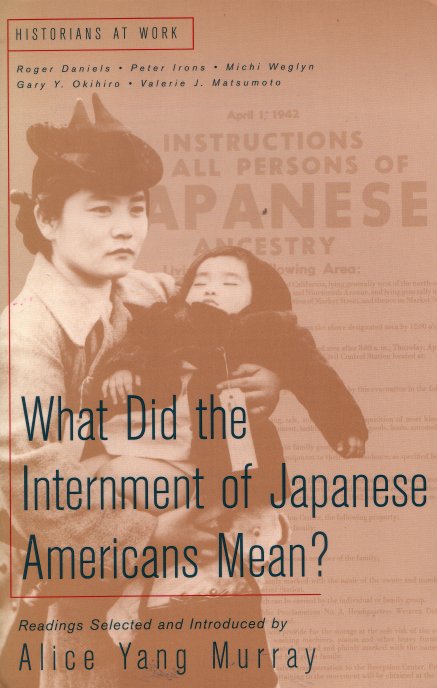
What Did the Internment of Japanese Americans Mean?

This book is a collection of essays on the subject from a variety of authors. Some of the topics include why were Japanese Americans interned; What caused the Supreme Court to affirm the constitutionality of internment; why did the US intern people from Central and South America; how did some Japanese Americans resist internment, and what was the impact of internment on Japanese American families and communities?
Following are the things I consider most important that I found in each section.
The Introduction notes that many ships were sunk by German submarines off the East Coast, yet it wasn't until after the Japanese Americans started to be interned that there were any Japanese attacks on the West Coast. The differences in how the Japanese Americans in Hawaii were treated in comparison to mainland Japanese Americans is also discussed.
The author also talks about the types of things written about the internment process, especially just after the end of the war and how those differed from things written some decades later.
The federal Agricultural Dept. held a meeting on the Japanese American farmers and concluded that the anti-Japanese American propaganda that was going on in the papers was really an effort to displace the Japanese American farmers and put their farms into the hands of whites. The chapter continues in an almost day-by-day analysis of behind-the-scenes movements by various federal departments to deal with the issue of West Coast Japanese Americans.
The author of the essay notes that, on the day FDR signed Executive Order 9066, an Army intelligence reported noted that there was no military necessity at all for removing the Japanese Americans from the West Coast. He also writes about how FDR wanted the Japanese Americans in Hawaii all shipped out and interned in mainland camps.
The chapter on the Supreme Court notes that an official report from the Office of Naval Intelligence noted that less than 3% of persons of Japanese ancestry in the US were any potential threat at all, and that most of them had already been arrested.
The chapter on Central and South American persons of Japanese ancestry talks about the idea of some in the US that our country needed to have a group of potential hostages that they could use in prisoner exchanges or in reprisals for actions of Japanese military in other countries. The chapter also talks about persons of Japanese ancestry in Canada and what happened to them, something which most books ignore completely.
The chapter on resistance starts off with various things that happened at the Tule Lake camp. It has a more complete discussion of events at that camp than almost any other book.
The chapter on what impact the internment hand notes the loss of status suffered by Issei males; the growing independence of females, and the problems of behavior among the young children.
Main Index
Japan main page
Japanese-American Internment Camps index page
Japan and World War II index page
|